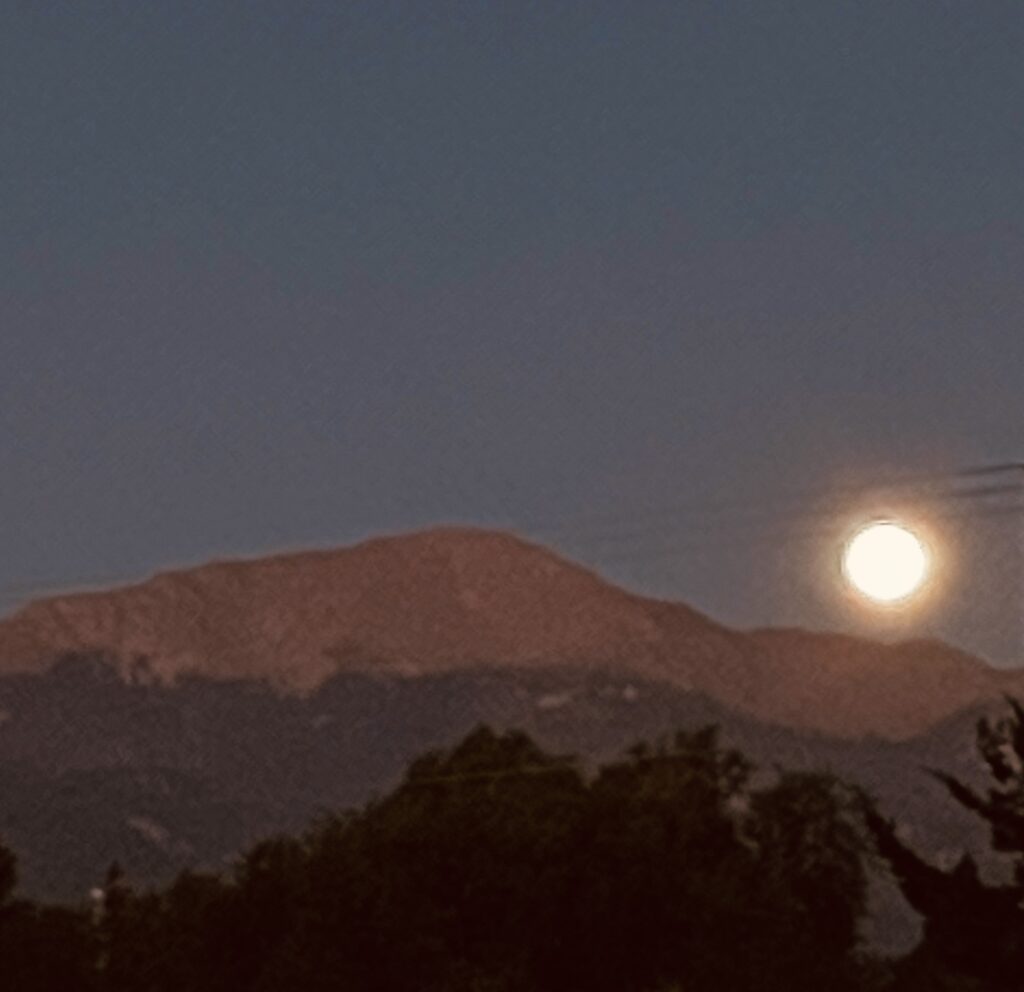“By the Light, of the Silvery Moon” was top of the charts in the early 1900s; a vaudeville standard that young lovers crooned to each other…given the chance, which was often taken beneath a full moon to the gentle strum of a ukelele echoing across a garden’s shrubbery depth, accompanied by a girlish giggle and gentle slap on her beau’s soft cheek.

Who doesn’t love a full moon? It lights up a garden, it illuminates a glasshouse with a crystalline intensity, and for many gardeners indicates the most propitious time to sow, tend, and gather.
The next time you purchase a bottle of biodynamic wine, spare a thought for Rudolph Steiner, who developed ‘anthrosophy,’ a philosophy uniting the spiritual and physical world to optimize human life. Steiner introduced biodynamic agriculture in 1924 at a lecture, bemoaning the declining quality of food produced using artificial insecticides and pesticides. Instead, he recommended controlling plant disease and enhancing production by using his specific “biodynamic preparations” combined with planting and treatment regimens regulated by the astrological and lunar calendars to plan and plant healthy productive gardens. A key piece of biodynamics, Steiner posited that “there is a definite connection between the Moon and the water in the earth,” and raised the question whether or not “the forces which stream through the earth at Full Moon must differ from those at New Moon. Does the plant in its growth respond to these forces or does it not?” Early experiments testing Steiner’s thesis revealed that seed sown during the moon’s waxing phase germinated better and more evenly and produced stronger root systems, and were more productive than plants grown from seed sown during the waning moon’s phase; the most propitious time to sow was determined to be two days before the full moon. This was reported in The Moon and the Growth of Plants, published by the Anthroposophical Agricultural Foundation in the UK in 1936. Admittedly, mine is a pretty sketchy outline of a quite complex system that was the precursor to organic gardening. Yet biodynamics (sometimes called “homeopathy for plants” since the preparations are applied in minute doses) is widely practiced. Applied to either garden or farm, the aim of biodynamic practice is to create a self-sustaining and balanced relationship to heal and nourish the earth. In that it is not far removed from the agricultural practices of indigenous peoples around the globe.

Standing in the garden on a summer night, hypnotized by the myriad textures of foliage, the deep shadows and glistening highlights cast by the lunar glow, I imagine ancient south-sea sailors reading the waves and navigating by the stars and phases of the moon to guide their canoes to new lands. They defined the physical world by the phase or character of the moon – Ke ala o ka Mahina, the path of the moon — the time for planting and fishing occurred during the four Kū Moons, while four Full Moons bringing energy, Ole Moons to relax and regroup. Hawaiians ordered their lives around the moon, counting nights instead of days, and moon maven that I am, I can quite imagine the pleasure and satisfaction this would give.
In 2016, the American Indian and Indigenous Studies Program at Cornell led a symposium that featured an installation recognizing the indigenous traditions, knowledge and garden-making practices that tied communities together. Led by growers from the Haudenosaunee (Iroquois) confederacy and program director, Jolene Rickard, Ah-Theuh-Nyeh-Hah (The Planting Moon) symposium included a demonstration garden centered on the now-well-known practice of planting the Three Sisters (beans, corn and squash) in beds structured like a turtle shell, each ‘bump’ devoted to one sort of plant. This device recalled the Iroquois creation myth telling all life and the earth was created on the back of a turtle.

The interweaving of diverse research practices to more completely approach resolutions is today recognized as convergence science; it includes incorporating Indigenous perspectives that are deeply rooted in understanding natural and social environments and so offer complementary insights that can enhance scientific inquiry. This was the foundation of my friend Dr Heather Lazrus, who passed away in February, 2022. She co-founded and co-directed the Rising Voices Center for Indigenous and Earth Sciences at the U.S. National Science Foundation’s National Center for Atmospheric Research and was co-principal investigator of the Rising Voices, Changing Coasts: The National Indigenous and Earth Sciences Convergence Hub (RVCC Hub) project. Convergence science, “brings together diverse disciplines, cultures, knowledge systems, and ways of knowing and understanding to solve complex problems that cannot be addressed by a single discipline or knowledge-system alone.”
It seems to me, reading widely as I do, and specifically for this blog, that stepping outside our comfort zone, exploring other roads, traditions and responses, most often leads to the point of convergence, where we can find and nurture a common understanding of shared problems, learn from each other’s mistakes and find alternate solutions. Or quite simply, find solace and friendship in what is our global garden.
Ethne Clarke, 2025
For more information on subjects I mention in this story:
The Planting Moon symposium: https://cals.cornell.edu/news/2017/05/seeds-and-knowledge-shared-planting-moon-gathering
About the structure and traditions of Iroquois: https://oneida-nsn.gov/wp-content/uploads/2016/04/ONEIDA-NATION-CULTURAL-SYMBOLS-IN-AND-AROUND-ONEIDA-RESERVATION-9.13.pdf
A paper prepared for Master Gardeners explaining Biodynamics and its place along side organic gardening: https://www.researchgate.net publication/286356710_The_Science_Behind_Biodynamic_Preparations_A_Literature_Review
What you need to know about planting a Three Sisters garden: https://www.nativeseeds.org/blogs/blog-news/how-to-grow-a-three-sisters-garden
Googling Heather Lazrus will yield a very long list of her publications; Heather’s work led to her co-developing and directing the Rising Voices Center for Indigenous and Earth Sciences at National Center for Atmospheric Research (NCAR) in Boulder. Their website and entity is now part of the Rising Voices, Changing Coasts Hub, concentrating on convergence science and maintained by the Haskell Foundation, of the Haskell Indian Nations University. Take a moment to visit https://www.rvcchub.org


